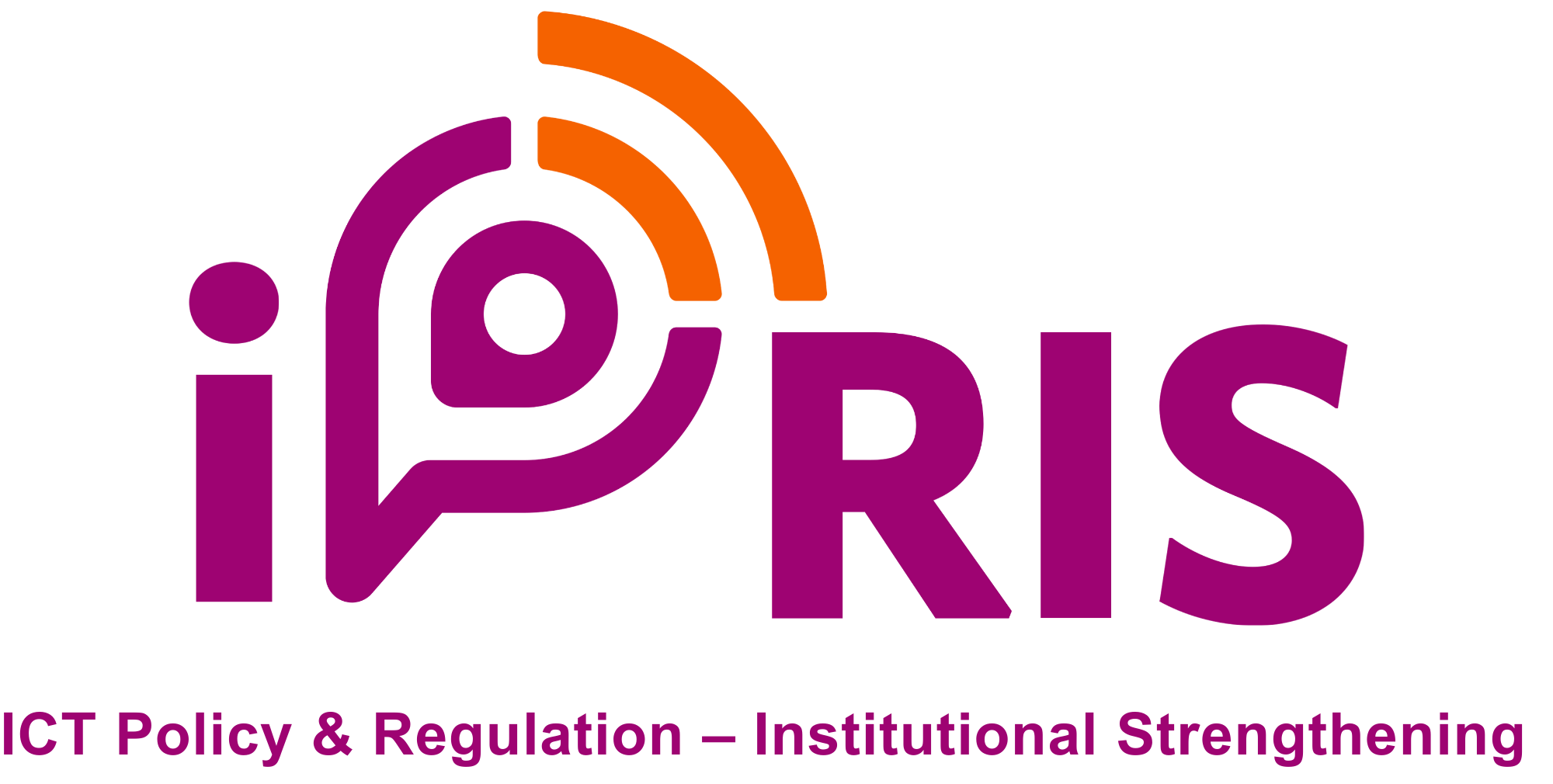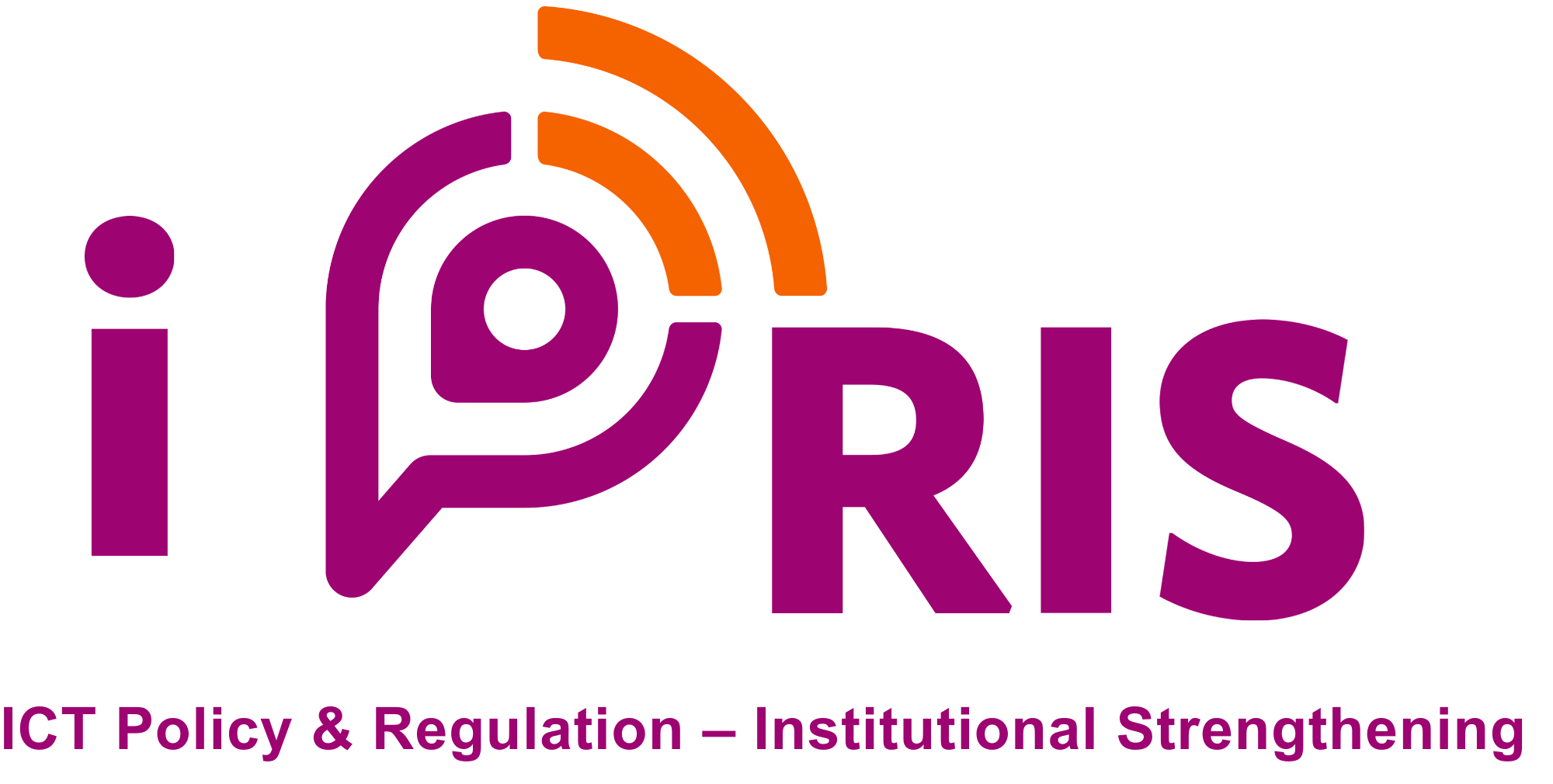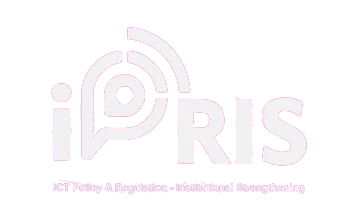The iPRIS 7th cohort's second week in Stockholm clearly showed the programme's transition from basic systems thinking to regulatory problem-solving in practice. During Week 1, the baseline concepts were established; meanwhile, regulators will continue engaging with the SPIDER, the PTS experts, and the Regional Regulatory Organizations (RROs) - WATRA, EACO, and CRASA. Week 2 was mainly focused on participants' Change Initiatives (CIs), and the regulators were given the chance to take home practical tools and frameworks that could be adjusted to suit African contexts. The National Communications Authority (NCA Ghana), Lesotho Communications Authority (LCA), Botswana Communications Regulatory Authority (BOCRA), Public Utilities Regulatory Authority (PURA The Gambia), Communications Authority (CA Kenya), and Malawi Communications Regulatory Authority (MACRA) are the Sub-Saharan African countries included in this seventh cohort.
Day 1: Expert clinics and CI deep dives
On Monday, the teams worked exclusively with RROs, SPIDER, and PTS experts in closed sessions to better define their problems, verify their assumptions, and prepare their evidence needs for the technical sessions that would follow. These closed clinics were the foundation for the week’s technical exchanges and ensured that participants could apply the lessons directly to the CIs.
Below are some highlights from the sessions:
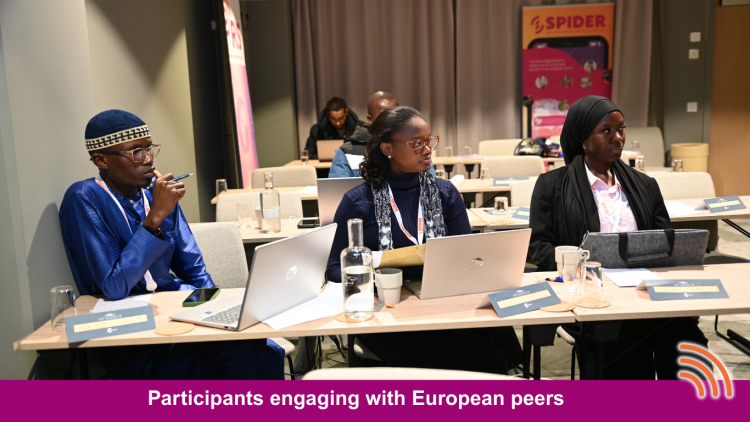
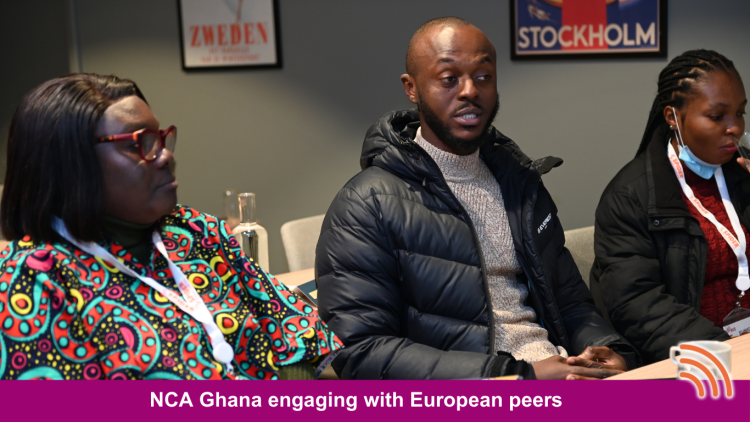
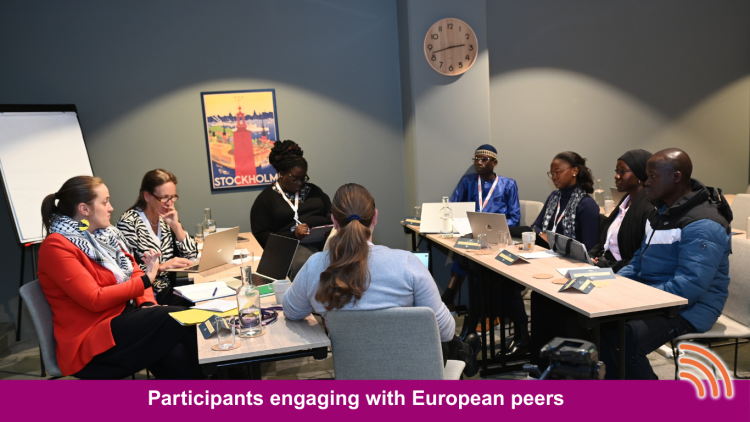
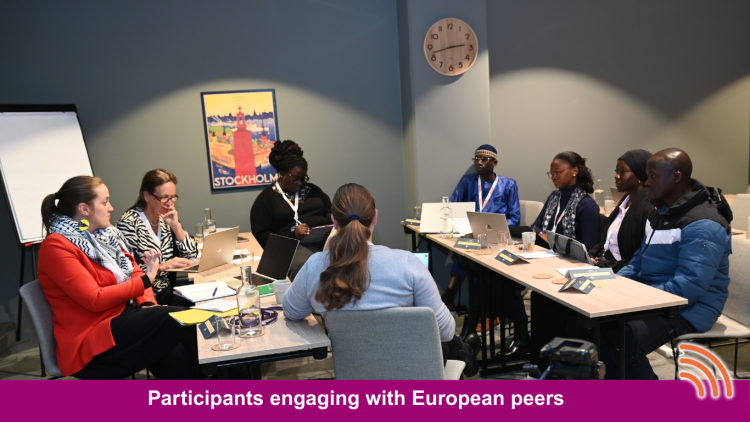

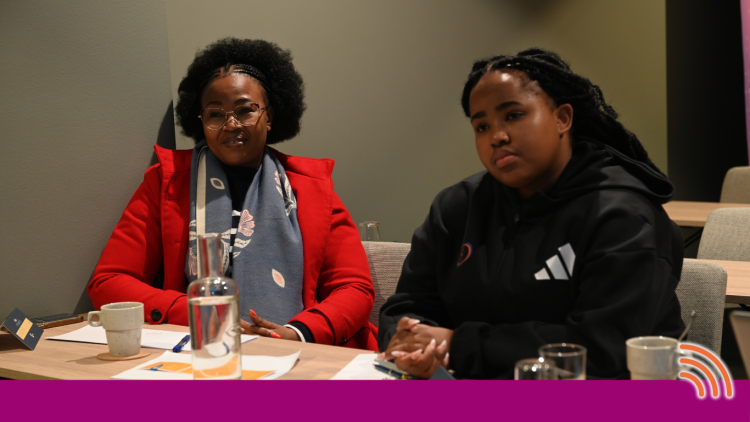
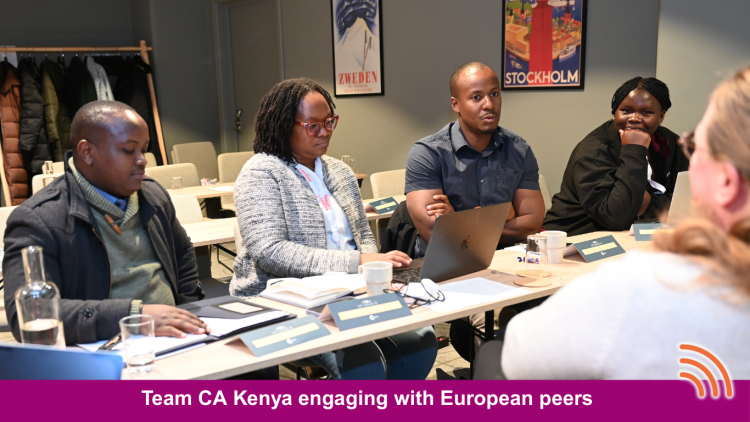
Day 2: Beyond universal access: reframing inclusion
Moving from “universal” to “meaningful” access
At Stockholm University’s Department of Computer and Systems Sciences (DSV), the participants were given a warm welcome into Sweden’s academic and policy ecosystem. Caroline Wamala Larsson and Malena Liedholm-Ndounou from SPIDER transformed the concept of access by taking the discussion beyond infrastructure and connectivity. The presenters clarified the distinction between having coverage and having connectivity that was genuinely useful in people's lives. They pointed out that, although coverage had grown in many areas, truly meaningful access required a stable power supply, a budget mobile phone, technical literacy, personal safety, appropriate content, and cultural alignment, without which the connection remained low.
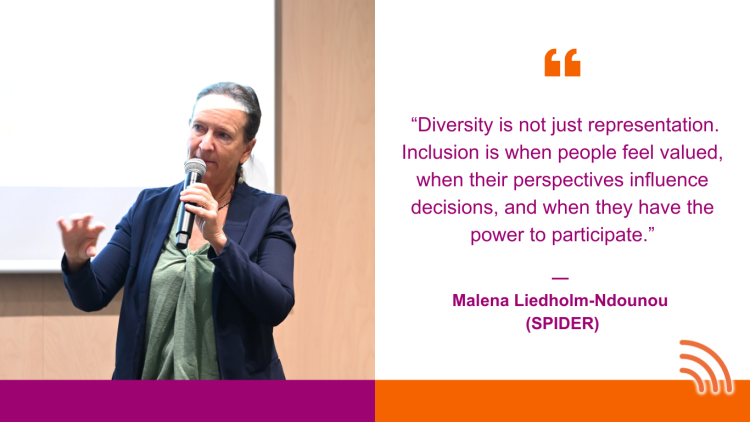
The hard numbers: Coverage vs. usage reality
The group examined recent GSMA statistics indicating that Sub-Saharan Africa had a usage gap of around 61%, equivalent to approximately 710 million people in the network coverage area who were not regularly accessing mobile internet. This gap was not due to the lack of towers but rather to a variety of factors, such as affordability, literacy, relevance, and safety.
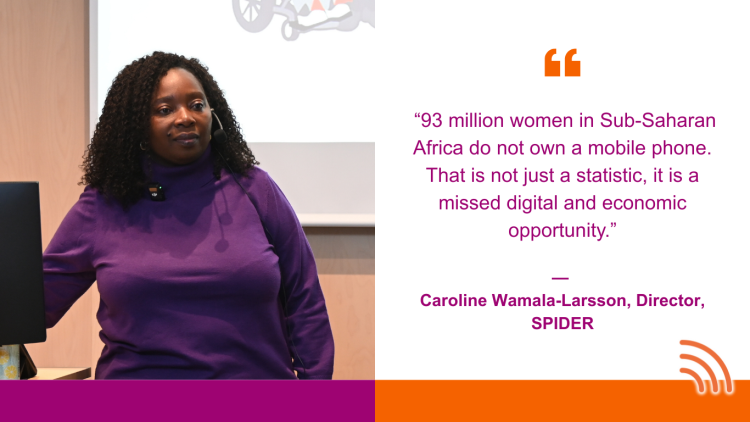
The moderators also mentioned gender-related trends: the GSMA data referenced in the discussion showed that 93 million women in Sub-Saharan Africa did not use mobile phones. They also pointed out that the network covered 215 million women but did not have access to the internet through mobile phones, demonstrating the compounded effect of factors such as ownership, freedom, and social barriers on women’s digital engagement.
Not just equality but equity
The sessions used easy-to-understand analogies, the apple tree, and a “game of life” depiction to emphasize that giving equal inputs does not always result in equal outcomes. Regulators were prompted to consider equity from the standpoint not just of treating everyone equally, but of creating different interventions so that those starting from disadvantaged positions can reach the same outcomes as others. This perspective called for the active participation of the government, civil society, and private-sector partners to confront and eliminate structural barriers together.
What is the reason for the gap in usage?
The participants grouped these barriers that were overlapping:
- Affordability—the costs of both device and data-restricted usage, even when the coverage area was available, and women's purchasing or use of mobile phones were often the least-priority items affected by household budget trade-offs.
- Digital and general literacy—having limited skills reduced people’s confidence and their ability to use online services.
- Relevance of content and language—there was not much content online that was relevant to the locals; the session pointed out that Swahili made up only 0.07% of the online content, despite there being around 150 million speakers, which highlighted the issue of content relevance.
- Safety and privacy—women were one of the groups that reported not using services due to safety fears, and the possibility of the photos or data being weaponised was one of the strong reasons for not using the services.
These findings shifted the discussion from a monolithic infrastructure concern to multidimensional policy responses that integrated USAF investments with social policy, education, language, and safety measures.
Competition regulation — practical frameworks and market realities
The session on the competition regulations with PTS specialists Alberto Naranjo and Björn Backgård quickly shifted from the theoretical to the practical in the African markets. The long formulas were no longer the subject of discussion but rather the main question for the consumer, the regulator, and the operator, facing completely different conditions from those in Europe. Participants compared two approaches to regulation: Europe's price-based and cost-based regulation, and the most powerful insights came from the audience itself.
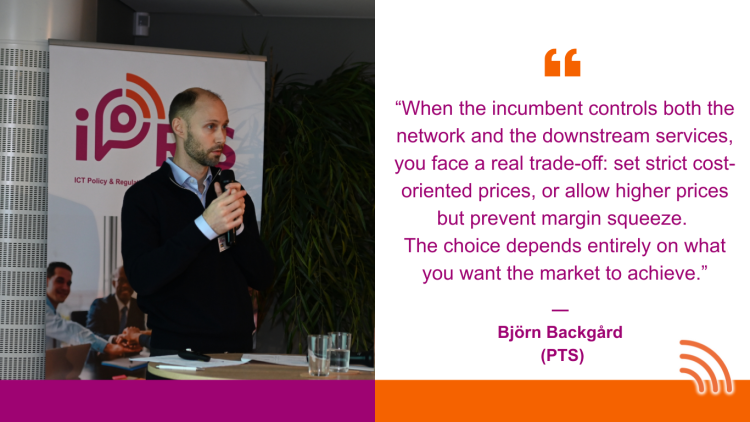
The main factors that influenced the conversation:
Smartphone use is going to skyrocket.
Sub-Saharan Africa is going to move from 54% to more than 80% smartphone adoption among mobile subscribers. A young population, affordability programs, and the availability of digital services are the main reasons for this change. The competition and the market access will be totally different.
Mobile Number Portability is not a big deal when every user has at least two SIM cards.
Consumers have been switching operators by changing SIMs, as many regulators have reported. Nowadays, the interconnection rates are so low that the incentive to be “on-net” is no longer there, so there is not much urgency for MNP in a lot of markets.
Prepaid is the king — and he changes the rules of the game.
In markets where prepaid is the leading payment method, customers are quick to reward excellent service and just as quick to punish poor quality. However, this also indicates underlying problems, such as the low number of credit users.
Roaming is still a tricky situation.
Although there are regional regulations in SADC and ECOWAS, operators still resist lowering wholesale rates to a great extent. Wi-Fi and apps like WhatsApp are helping users avoid roaming charges, even though they still incur them.
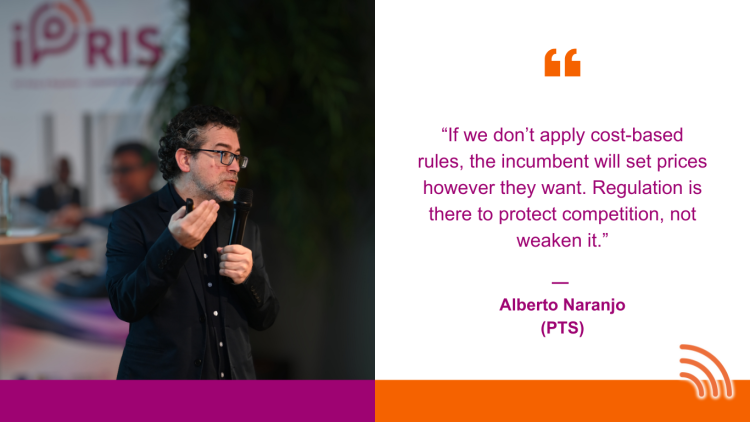
A common conclusion
The nature of the competition, in effect, is not determined by the number of operators but rather by the presence of genuine choice, fair prices, and incentives that align with the purchasing behavior of African consumers.
Day 3 – Inside Ericsson: Technology, policy and the future of connectivity
On the third day, the group moved to the heart of Sweden's innovation scene - the Kista headquarters of Ericsson. The day began with the welcome of Peter Olusoji Ogundele, who presented on market trends, regulatory priorities, and next-generation technologies. A Global Spectrum Update explained how the demand, licensing, and coordination in the spectrum are changing globally - a must-have background for Change Initiatives that require good spectrum planning. Afterwards, a survey of the satellite market revealed the emergence of LEO constellations and the impact of new players on rural areas' coverage, competition, and prices in Africa.
During one of the sessions, which were very forward-looking, EU AI policy and enterprise AI compliance were reviewed, and the interconnection among telecom infrastructure, data governance, and emerging AI-driven services was highlighted. After that, the Ericsson team introduced network security from a holistic perspective, highlighting the three aspects of resilience, threat detection, and the changing responsibilities of critical infrastructure operators.
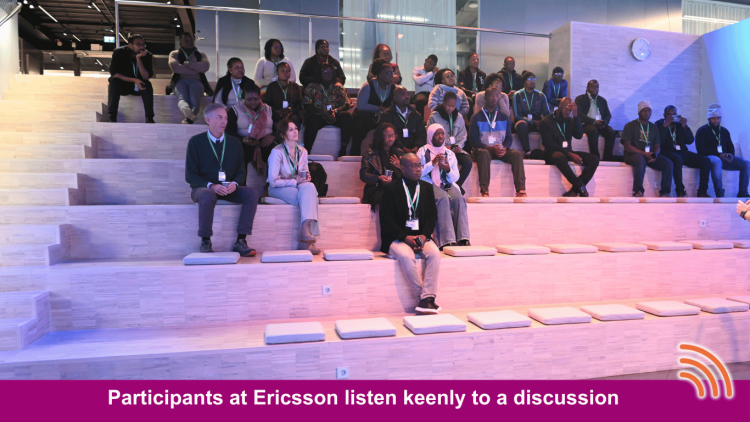
In the afternoon, the group toured the Ericsson Imagine Studio, participating in hands-on demonstrations of Digital Twin technologies, XR applications, network slicing, enterprise solutions, FWA deployments, and advanced Quality of Service tools. They thus saw the abstract concepts transformed into tangible solutions.
The day concluded with a multistakeholder panel discussion among Ericsson, Telia and PTS, where the participants were allowed to query the industry experts about the factors that encourage investment, the competition so far in the market, and its future dynamics. Day 3 was an experience paralleled by none in the whole week - a hands-on, high-impact encounter with the technologies and the ruling industry perspectives molding the communication in Africa.
Day 4: Measuring impact, understanding people, and strengthening change initiatives
Day 4 merged the two most essential factors of this ipRIS cycle: efficient project management and the adoption of the deep, human-centric digital inclusion lesson. The morning session, entitled Beyond Universal Access Part 2, was conducted by Dr Caroline Wamala Larsson. The session challenged participants to investigate who still lacks connectivity and the reasons for this. In the afternoon MEAL session, guided by Malena Liedholm Ndounou, the focus was on assisting the teams in refining their Change Initiatives into structured, fundable, and measurable projects.
Building Stronger Projects Through MEAL
Malena took the NRAs through the result chain, impact, outcomes, outputs, and convinced the teams to start by thinking of the end. Impact statements like “improve digital inclusion” are driven by ambition, but still, change initiatives need to be expressed in terms of deliverable outputs and measurable indicators. The teams focused on refining their project plans, identifying internal and external stakeholders, and outlining where modifications will be necessary when actual implementation begins.
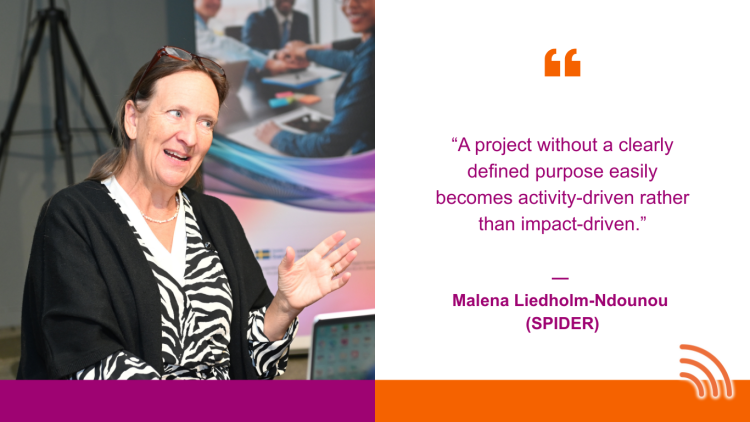
It was noted that organisations often overlook accountability and learning. Malena reminded the participants that assessing what didn’t work is a must: “If you had the opportunity to restart this project, what would you do differently?” This approach, she pointed out, is as much a part of national telecom regulation as it is of everyday organisational practice.
Beyond universal access: Understanding usage gaps and human realities
The group spent time discussing the week's main question again: Why does high infrastructure coverage not result in high usage? The discussions in the room highlighted that the coverage gap globally has now been reduced to about 4 per cent. In comparison, the usage gap has remained at about 39per cent and 60 per cent in Sub-Saharan Africa. The talks brought out a number of reasons, such as: the cost of the service, the lack of smart mobile phones, which is often below 20%, the limited skills of the users, and the myths that still exist — ranging from EMF rumors to 5G conspiracies — that affect people's behavior as consumers.
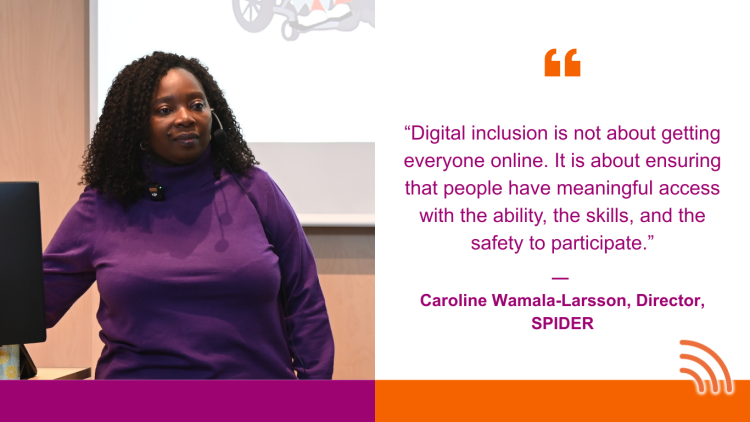
Dr Wamala pointed out the need for sex-disaggregated data, equitable numbering, and addressing resource allocation and consumer awareness as regulatory levers that could help in closing the divide. Participants recounted their national experiences with Girls in ICT programs, children's online protection, regional consumer parliaments, and reforms in cybercrimes legislation.
Anticipating the final day of week 2
The second week of the iPRIS 7th cohort cycle in Stockholm has been very participatory and illuminating, from actual site visits to learning about DEI and project management principles. Today, the focus will be on MEAL in greater depth and on exploring practical applications of European regulatory practices. The first part of the day is devoted to hands-on sessions by Malena Liedholm Ndounou from SPIDER, who will introduce regulators to the tools and methodologies that they can use to plan, monitor, and evaluate their change initiatives effectively.
The next step for the participants is a visit to Telia at the Mall of Scandinavia, where Egle Gudelyte-Harvey, Head of Legal, will speak to the group about Western European telecom operations, regulatory compliance, and innovative practices, including digital services, legal frameworks, and network management case studies. The incorporation of such experiences will enable attendees to link theory and practice; they will see how big players navigate difficult regulatory situations, keep their operations running, and even turn a profit.
Each morning and afternoon session will be interactive, with peer learning and reflection, and will include time for participants to share their insights and plan their next steps. By blending classroom learning with on-the-ground exposure, week two has strengthened participants' capacity to lead change initiatives in their respective countries, thereby spreading practical understanding of how European regulatory policies can guide and inspire the digital transformation in Africa.
iPRIS is coordinated and implemented by SPIDER in strategic and technical partnership with the Swedish Post and Telecom Authority (PTS) and Institut luxembourgeois de régulation (ILR), as well as ARTAC, CRASA, EACO, and WATRA.
iPRIS is funded by the European Union, Sweden, and Luxembourg as part of the Team Europe Initiative “D4D for Digital Economy and Society in Sub-Saharan Africa” (Code: 001).
